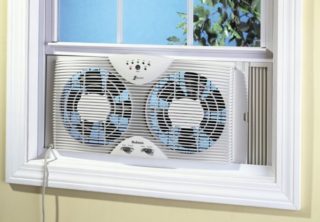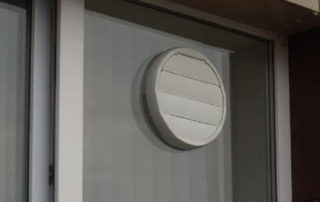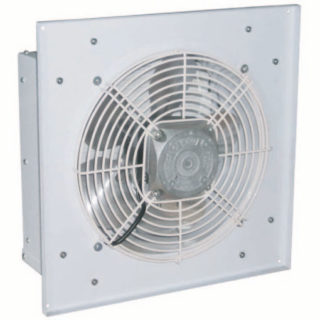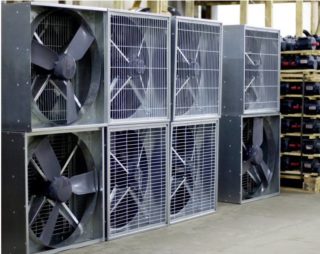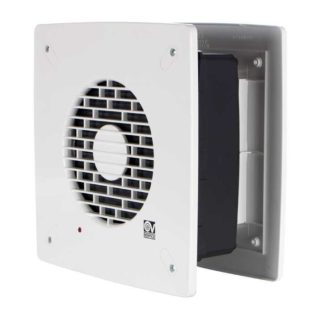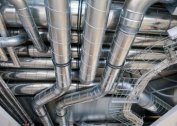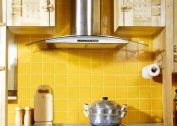For domestic and industrial purposes, hoods, air conditioners and other equipment are used to clean the air. Window fans have not lost their popularity either. Their range is diverse, so you can find a device for any area of the house. This is a simple and inexpensive way to clean the air masses. Before purchasing a device, you should understand what types are, what functions they perform, and how to install them correctly.
Device Specifications and Application
A window fan is an indispensable device in cases where it is not possible to make another air conditioning system. Also, due to the wide distribution of plastic windows, the installation of such a device is required. Modern double-glazed windows impede the natural circulation of air, which is why the balance and a healthy microclimate in the room are disturbed. The device does not make noise during operation, which is its important advantage, and also consumes little electricity.
The positive aspects of installing a window fan include:
- Constant air exchange in the room. The room will be constantly filled with oxygen.
- Replacing bulky ventilation systems.
- The compactness of the device.
- Effective removal of an unpleasant smell.
- Profitability. The power consumption for fan operation is minimal.
- The ability to adjust the operation of the device. To do this, use a special controller on which you can set the mode of operation.
- High efficiency.
- Reliability.
- A wide range of models for any area and power.
- Price.
- Independence from weather conditions.
- Protection against dust and rainfall.
- Ease of installation.
The negative sides include:
- The need to replace the glass structure. When installed on metal-plastic windows, sealing may be damaged.
- The presence of slight noise during operation.
- The presence of heat loss, which can be reduced by using a device with curtains. When lowering the blinds, the fan turns off automatically.
- If the installation technology is not followed, there is a risk of damage to the glass unit.
The home window fan has the following specifications:
- Power. The indicator of a household device is 15-20 watts. Thanks to its low power, it provides virtually silent operation compared to hoods and ventilation systems.
- The average speed of the blades is 3000 rpm.
- Case material - plastic, which is resistant to weathering, temperature changes.
- Operating temperatures range from -50 ° C to + 50 ° C.
- The term of operation is 15 years or more.
Often, window fans are placed in the basement (cellar, storage). Condensate accumulates in them, which can destroy the structure, so a ventilation system is installed to drain excess fluid. Stagnant air with its characteristic odor will also be successfully discharged.
Varieties of window fans
Three main groups of window fans can be distinguished - domestic, industrial and axial. The latter, in turn, are also divided into three subtypes - supply, exhaust and supply and exhaust. All types differ in properties, characteristics, power, appearance and functionality.
Axial Window Fans
Instruments consist of a screw or blade, a housing and an engine. The blades are attached to the axis of rotation.They differ in screw diameter, number of blades and engine power.
The fan in the exhaust window works with a kitchen hood or independently. It removes unpleasant odors from the room, moisture and excess heat. Consumes a small amount of electricity. There are models with shutters that nullify reverse draft and the risk of polluted air getting back into the room.
Supply models work on the opposite principle. They let air in, not clean it. The main area of application are rooms with a lack of oxygen - these are offices, living rooms.
Supply and exhaust window fans are a system that works in both directions. They take polluted air outside and fill the room with fresh. From both directions, air flows through the filter. To enter the house, the air is also heated.
Household fans
These are devices that allow you to ventilate the room without heat loss and ingress of dirt and dust. A fan-shaped household fan updates the air every two hours and helps maintain an optimal microclimate.
The positive qualities include small dimensions, low cost, minimal energy consumption, low noise and ease of installation.
Industrial fans
Oversized industrial window fans are used in warehouses, workshops, and enterprises. Their installation is provided even at the stage of construction of the building and takes into account the features of its use. The devices have high power, but have a high noise level.
Device Features
The main distinguishing feature of window fans is low power consumption. But this does not negatively affect their functionality - they also effectively remove polluted air from the room.
With the simplicity of design, window fans have a high level of efficiency and create a minimum of noise. They are easy to install even with your own hands. The functionality is not affected by the environment, the devices operate at sharply plus and minus temperatures. So that the room does not get cold, you can buy a fan in the window with curtains.
Selection recommendations
A wide range of models is associated with the possibility of using one or another device in a wide variety of operating conditions.
Before choosing a device, you should familiarize yourself with information on suitable power. Powerful fans are usually installed in production rooms. A small-sized device is enough for an apartment.
If an extractor hood is selected for the kitchen window, it is important that the fan effectively removes odors that appear during cooking. The best option would be a forced-air or wall-mounted air exchanger with high power. In addition to him, an extractor hood and an additional air outlet are placed in the kitchen. It will help clean the kitchen space from excess heat and burning.
The bathroom and toilet are rooms with high humidity, where the risk of mold and mildew increases. It also requires the removal of an unpleasant odor from the bathroom. The best choice is a wall fan, which is installed in conjunction with a check valve. Often, the system is connected to the lighting. When the light is on, the air outlet will work, and when it is turned off, it goes into an idle state. This scheme is simple and efficient.
A room extractor hood is usually placed in a room or hall. It is enough for small premises. Many experts advise installing supply and exhaust fans at the same time for maximum air exchange. Then the room will be constantly filled with oxygen, which will help a comfortable rest.
Window fan installation
 Installation features of the window duct depend on the type of window. The general algorithm for installing the hood in the window:
Installation features of the window duct depend on the type of window. The general algorithm for installing the hood in the window:
- Checking the health of the mine in the room where the device will be installed.
- Marking the window under the duct.
- Hole cutting. In the case of metal-plastic windows, the help of professionals is required.
- Mounting the frame on which the equipment is placed.
- Duct connection.
- Connection to an electric network.
There are two ways to install fans, which depend on the type of glass. The first method is used if single-glazed or double-glazed plastic windows are installed in the house, as well as old wooden ones. To put a fan, it is necessary to remove the glass, cut a hole in the shape of the fan, install it back and place the device.
In the case of installing metal-plastic windows in the house, a more complex method is used, since it is important not to damage the sealing of the double-glazed windows. Installation in this case is carried out by specialists who remove the glass and put a new one in its place, with a pre-cut hole for the fan.
It is important to install the device correctly. Otherwise, there may be no airflow or cold in the house in winter, vibration and noisy work. If such problems are detected, reinstall the system.
